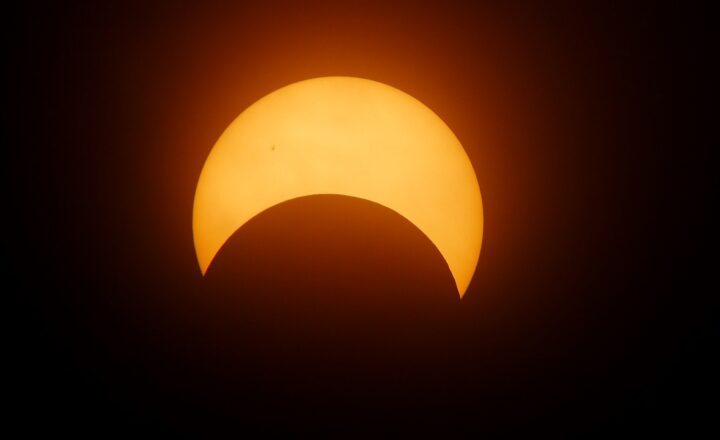The Mystery of Measuring the Mass of a Star: How Astronomers Make Sense of Space
November 12, 2024

When gazing up at the night sky filled with countless stars, it’s easy to forget that each star is a massive ball of hot plasma, exerting gravitational forces and influencing celestial bodies around it. One vital piece of information that astronomers seek to understand about stars is their mass, a factor that significantly influences a star’s life cycle, luminosity, and eventual fate. This article delves into the techniques that astronomers employ to measure the mass of stars and unpacks the complexities and mysteries surrounding this essential aspect of astrophysics.
1. Why is a Star’s Mass Important?
Stars vary widely in mass, and this variance dictates many characteristics and behaviors of a star throughout its life cycle. For example:
– Lifespan: More massive stars burn their fuel at a much faster rate than lighter ones, leading to a shorter lifespan. While a sun-like star may exist for around 10 billion years, massive stars might only burn for a few million.
– Energy Output: A star’s mass is directly related to its luminosity. Massive stars tend to be far brighter and emit more energy, affecting the entire stellar ecosystem.
– Supernova and Black Hole Formation: The mass of a star plays a critical role in determining whether it will end its life as a white dwarf, neutron star, or black hole, creating a range of phenomena in the universe.
Understanding a star’s mass helps astronomers decipher its past, present, and future, contributing to our broader understanding of the cosmos.
2. Methods of Measuring Stellar Mass
Astronomers have developed several methods to measure the mass of a star, often employing complex mathematics and observations. Below, we explore some of the most prominent methods:
a. The Binary Star Method
One of the most reliable ways to measure stellar mass is by observing binary star systems, where two stars orbit around a common center of mass. By applying Newton’s laws of motion and gravity, astronomers can calculate the mass of each star based on their orbital characteristics.
– Spectroscopic Binaries: By analyzing the stars’ light spectra, astronomers can determine their velocities as they orbit their common center. This Doppler effect reveals how fast each star moves, allowing for mass calculations.
– Eclipsing Binaries: In some binary systems, one star blocks the light from another at regular intervals. By measuring the duration and frequency of these eclipses, astronomers can derive precise data on the stars’ masses.
The binary method is particularly effective due to its reliance on observable and measurable properties, leading to reliable results.
b. The Gravitational Influence Method
For stars that are not part of a binary system, astronomers look at the gravitational influence that a star has on nearby celestial objects. Applying Kepler’s laws of motion, the mass of a star can be inferred by studying the orbits of exoplanets or stars in its vicinity.
– Exoplanets: When an exoplanet orbits a star, it causes the star to wobble slightly due to gravitational pull. By measuring this wobble, typically using the radial velocity method, astronomers can estimate the mass of both the planet and star.
– Star Clusters: In star clusters, the collective gravitational forces of all members can help infer individual stellar masses through models of the cluster dynamics.
This method emphasizes the interconnectedness of celestial neighbors and the importance of gravitational forces in the universe.
c. The Mass-Luminosity Relationship
The mass-luminosity relationship is an empirical rule that correlates a star’s mass with its luminosity. On average, more massive stars are more luminous, and this relationship can help estimate mass for single stars by measuring their brightness.
– Hertzsprung-Russell Diagram: Astronomers plot stars on this diagram based on their brightness and temperature, revealing patterns that correspond to the mass-luminosity relationship. This tool allows the estimation of stellar masses based on their luminosity alone.
While this method is less precise than direct measurements from binary systems, it is valuable for large samples of stars and is often utilized for distant stars.
d. Asteroseismology
A relatively newer method, asteroseismology involves studying the oscillations or ‘pulsations’ of stars. These oscillations provide insights into a star’s internal structure and dynamics.
– P Modes and G Modes: By examining the frequency patterns of pulsations (both pressure modes and gravity modes), astronomers can derive the mass, age, and composition of the star.
This technique has gained traction thanks to missions like Kepler, which monitor the light curves of thousands of stars, mapping out their oscillatory behavior.
3. Challenges in Measuring Stellar Mass
Despite advances in technology and methodology, measuring stellar mass remains fraught with challenges:
– Distance: Many stars lie at distances beyond the reach of conventional telescopes, complicating observations. Calculating mass requires precise distance measurements that can be challenging to obtain.
– Variability: Some stars are variable, changing brightness due to intrinsic processes, which can obscure measurements.
– Dust and Interstellar Medium: Dust can block light from stars, making it difficult to determine their true luminosities or spectra.
These challenges highlight the complexities involved in the straightforward-seeming task of measuring something as fundamental as mass.
4. The Future of Stellar Mass Measurement
The advent of new telescopes and technologies promises exciting developments in measuring stellar mass:
– Space Telescopes: Upcoming missions, such as the James Webb Space Telescope, are expected to improve our ability to study faint or distant stars.
– Interferometry: This technique allows astronomers to enhance resolution beyond conventional optical limit, offering greater detail in observing stellar movements.
– Data Analytics: Advances in machine learning and data processing will assist in analyzing vast astronomical datasets more efficiently, leading to new discoveries.
As our observational capabilities improve, astronomers are likely to uncover even more about stellar mass and its implications.
Conclusion
Measuring the mass of a star may seem like a straightforward task, but it is a complex endeavor that requires a blend of creativity, precision, and advanced astronomy. From binary systems to asteroseismology, astronomers utilize a variety of methods to glean insights about the stars above us.
Through continuous advancements in technology and methodology, our understanding of stellar masses and their implications in the universe will only deepen, revealing the mysteries of the cosmos one measurement at a time.







